12 Jan 2024
Compared to the traditional film-watching experience, how does it feel to watch a film wearing a virtual reality (VR) headset? How can VR stimulate different emotions in the audience?
Recently, a research article written by Xi’an Jiaotong-Liverpool University (XJTLU) researchers on cinematic virtual reality (CVR) was accepted by SIGGRAPH Asia 2023, an international conference on computer graphics and interactive techniques.
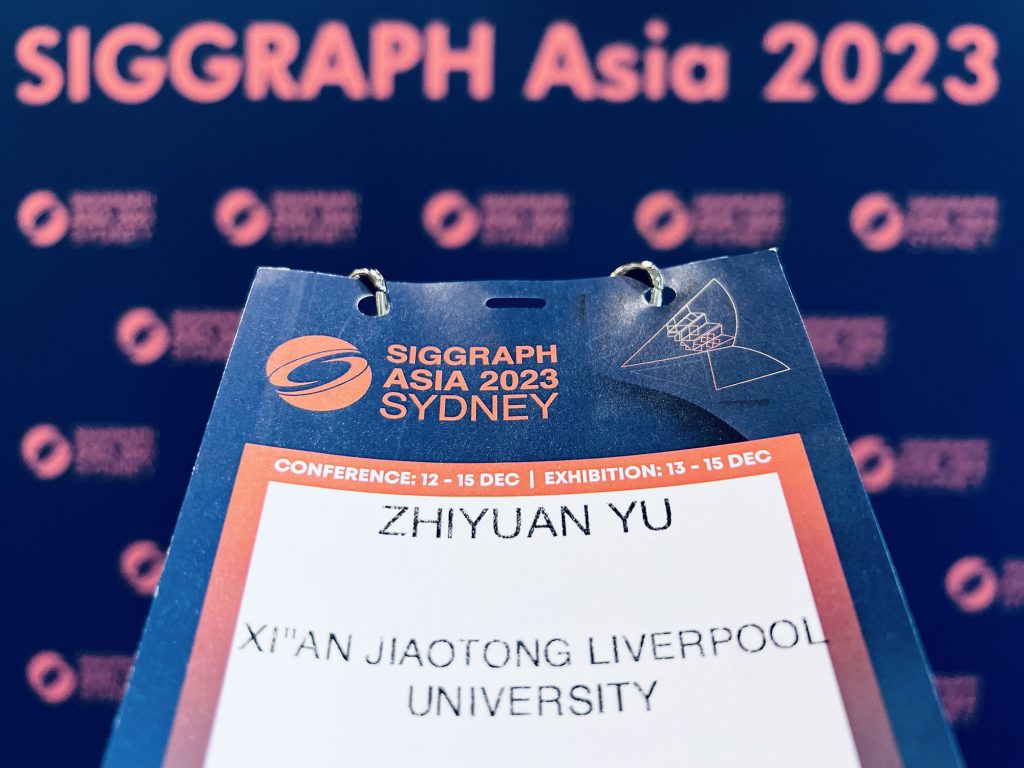
Zhiyuan Yu’s conference badge
The study compared the effects of different film-watching methods and found that CVR can trigger stronger emotional responses in the audience than traditional mediums. The findings also revealed that CVR has unique potential in storytelling and that research is needed to re-examine VR visual language and provide insights on how to adjust CVR filming strategies.
SIGGRAPH (ACM Special Interest Group on Computer Graphics and Interactive Techniques) is the most authoritative international conference on computer graphics. Since 1967, it has been dedicated to promoting and developing software and hardware techniques for computer drawing and animation production.
SIGGRAPH Asia is the only branch of SIGGRAPH and holds an annual conference. Around 6000 people attended the 2023 event in Sydney, Australia, from 12-15 December.
Watching VR films
Zhiyuan Yu, first author of the paper and a PhD student at XJTLU’s School of Advanced Technology, describes how the team compared three film-watching methods: computer screens, projectors, and VR headsets. They divided 45 participants into three groups according to the three methods.

Film-watching methods: computer screens, projectors and VR headsets
Yu says: “We showed the participants ten of the most representative types of visual language: long shots, full shots, medium shots, close shots, close-ups, high-angle shots, low-angle shots, eye-level shots, ground-level shots, and top shots.
“We measured their pleasure, arousal, and dominance responses using the Self-Assessment Manikin, a questionnaire for measuring emotional response.
“We found that VR can amplify the audience’s emotional perception compared with traditional methods. In most of the shots, it evoked higher arousal and a decreased sense of being in control, which means a higher level of emotional engagement.”
The researchers found that out of the ten types of visual language, ground-level shots and close-ups elicited different emotional responses in audiences wearing VR headsets.
Yu says: “Many participants felt uncomfortable watching ground-level shots in VR, as these shots bring a sense of oppression and being dominated, making people feel that they are in front of a giant or being stamped on, which is totally different from a traditional film-viewing experience.”
“Additionally, close-up shots in VR films can reduce the audience’s pleasure, which is a reminder that not all traditional filming techniques are suitable for CVR and need to be considered carefully.”
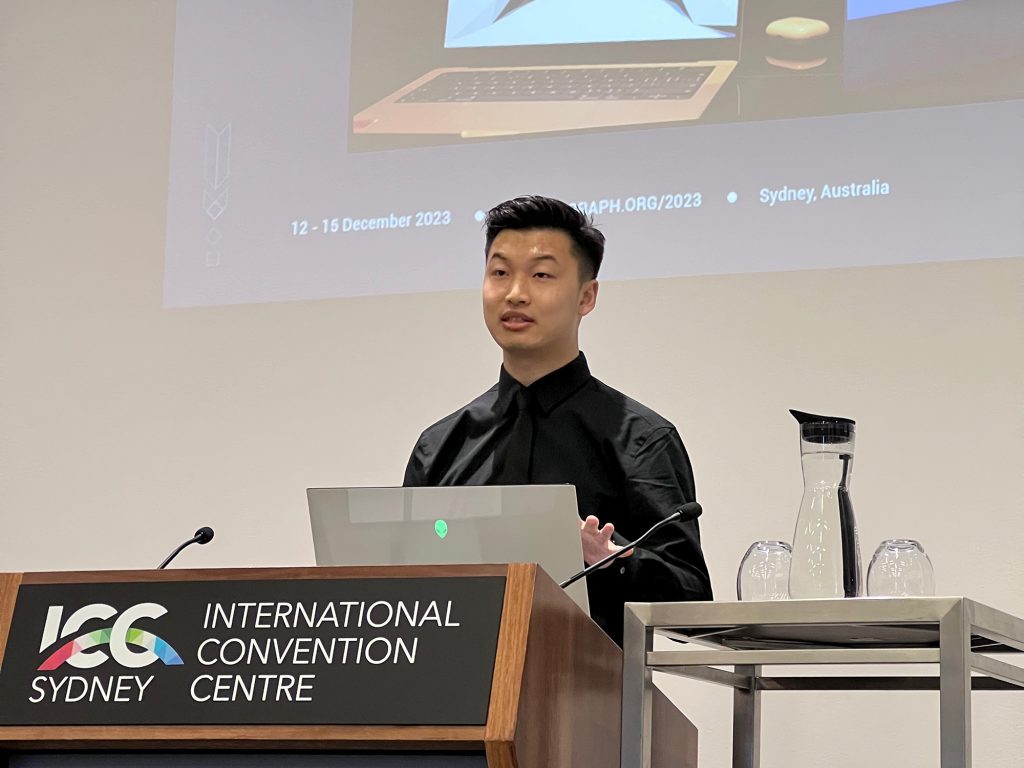
Zhiyuan Yu at SIGGRAPH Asia 2023
“The Oscar award in computer graphics”
According to Yu, SIGGRAPH Asia is very strict in accepting papers, and the acceptance rate is less than 20%. This year, only five papers on VR were accepted.
“Papers published at SIGGRAPH Asia are generally regarded as highly influential and innovative in the field of computer graphics and interaction design. Some people even call it the ‘Oscar award in computer graphics’.
“Being recognised by a top conference means that our research findings are valuable and meaningful, and we will continue to explore the field of CVR,” he says.
Zhiyuan Yu received both his bachelor’s and master’s degrees from XJTLU’s Department of Industrial Design, and his master’s final year project focused on VR teaching space and service design. The user-centric way of thinking and analysis he learned in the industrial design programmes influenced his later studies.
He started exploring CVR at the beginning of his doctoral studies in 2020, however, his understanding of the field was very limited back then.
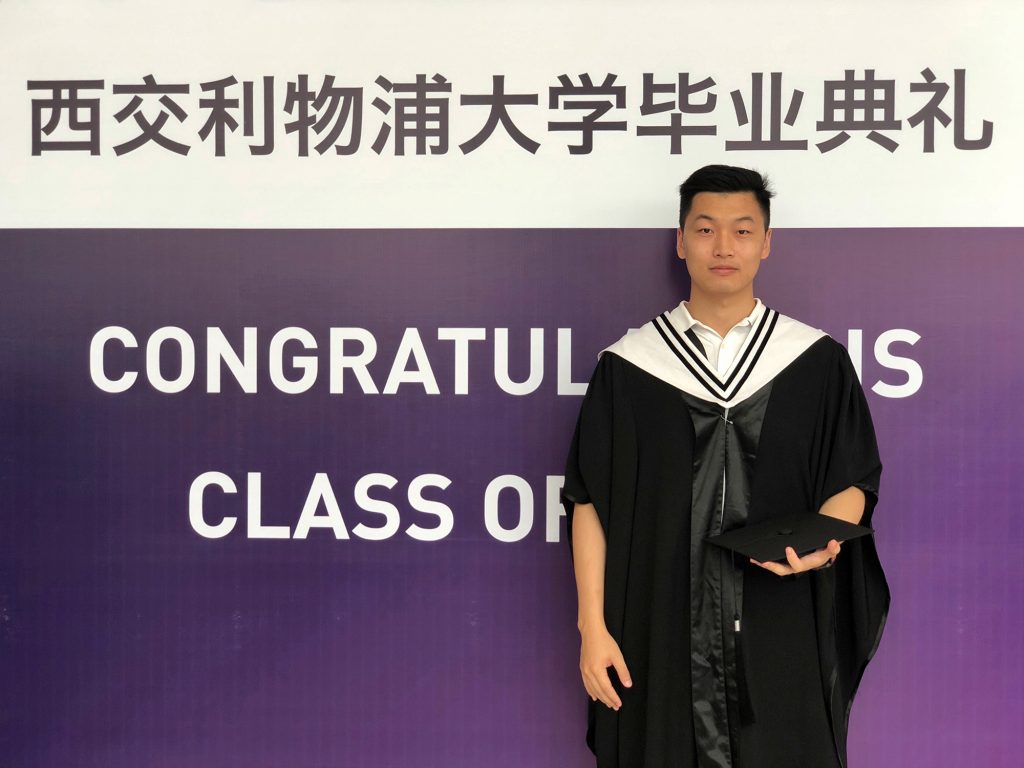
Zhiyuan Yu received his master’s degree in 2019
“It was my supervisor, Dr Cheng-Hung Lo, who encouraged me to continue to study cinematic visual language because he saw the potential of this area. He also believed that it matched my personal strengths well,” Yu says.
“I have worked on VR in both my undergraduate and master’s programmes, and photography has been a hobby of mine since childhood. Therefore, I’m able to analyse visual language and interpret it from a scientific perspective at the same time. In my opinion, this is a research project that combines art and technology.
“I felt pure happiness during the research process. My motivation came from sharing unique discoveries in the field that I love. In the future, we will also study other topics such as camera movement speed and montages in CVR.”
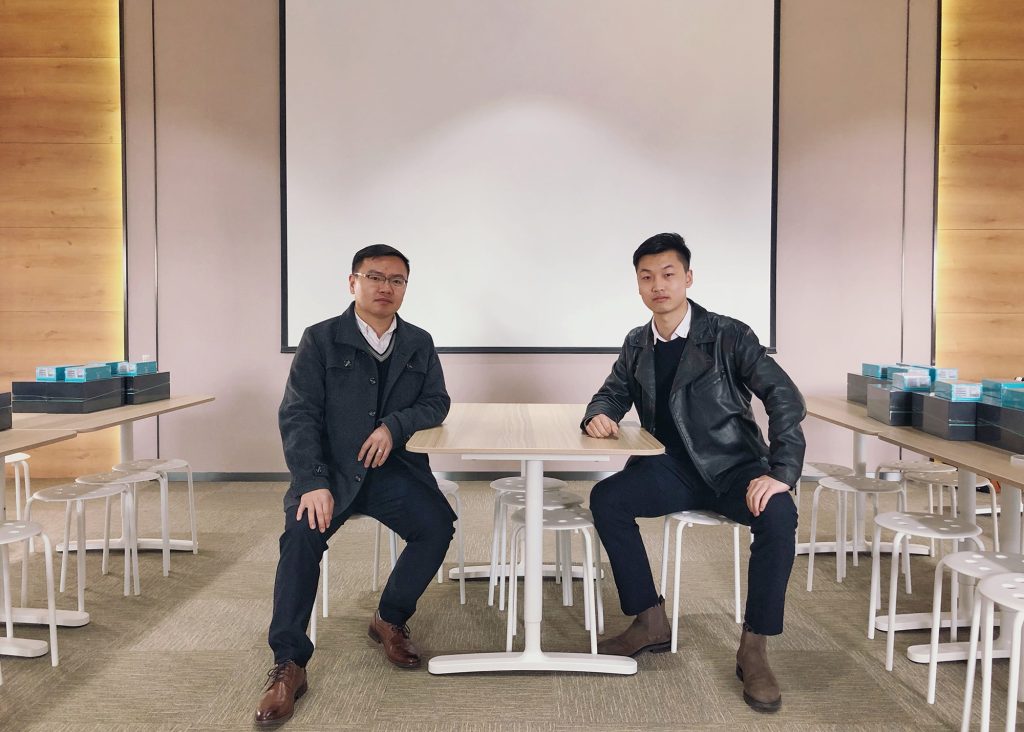
Zhiyuan Yu and Dr Cheng-Hung Lo at the VR teaching centre at XJTLU Affiliated School
The paper “Comparing Cinematic Conventions through Emotional Responses in Cinematic VR and Traditional Mediums” was co-authored by Zhiyuan Yu, Dr Cheng-Hung Lo, Dr Mutian Niu, and Professor Haining Liang.
By Yi Qian
Translated by Xiangyin Han
Edited by Precious Chibeze and Catherine Diamond
Photos courtesy of Zhiyuan Yu
12 Jan 2024
RELATED NEWS

New methods for improving water management to develop sustainable cities
Water, as one of the essential natural resources, is vital for the growth of any region. How much water a city has access to and how water is distributed is ...
Learn more

Green spaces can save lives, according to urban big data
Against the backdrop of global climate change, extreme heat events are becoming hotter, longer, and more frequent. Such sustained extreme heat has severely i...
Learn more
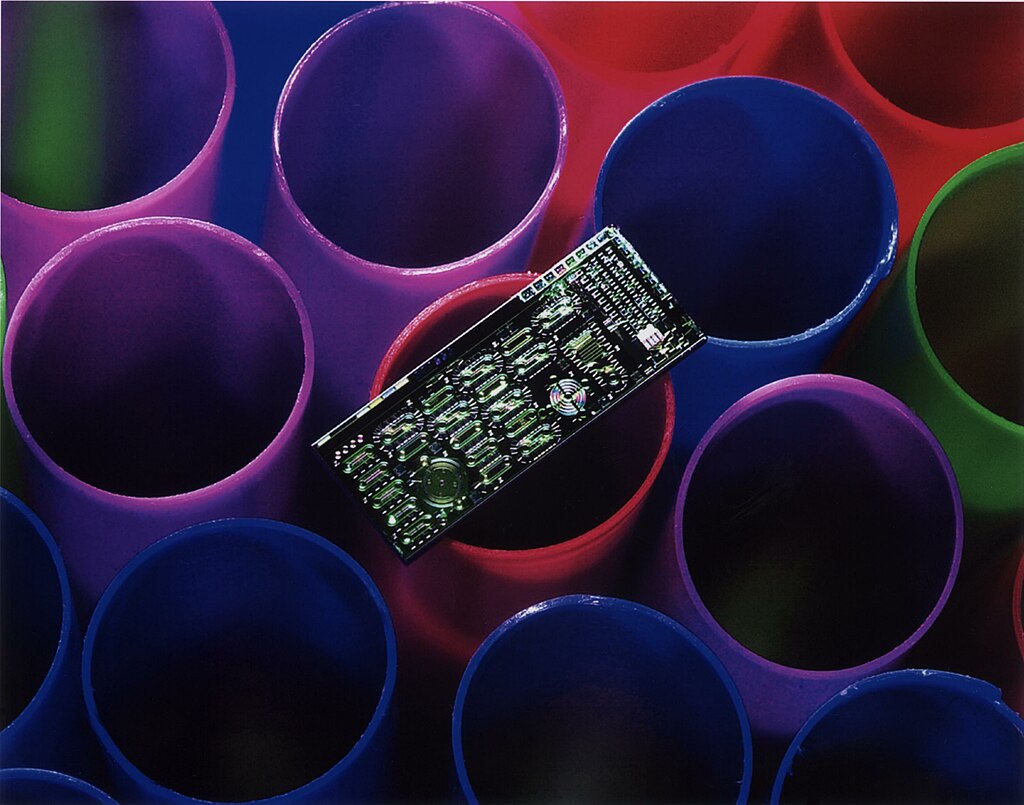
The little things matter: Chemists develop new sensor for microvolume pH detection
Measuring the pH of substances gives us vital clues about the world around us, such as identifying contaminated water or checking the toxicity of medical or ...
Learn more







